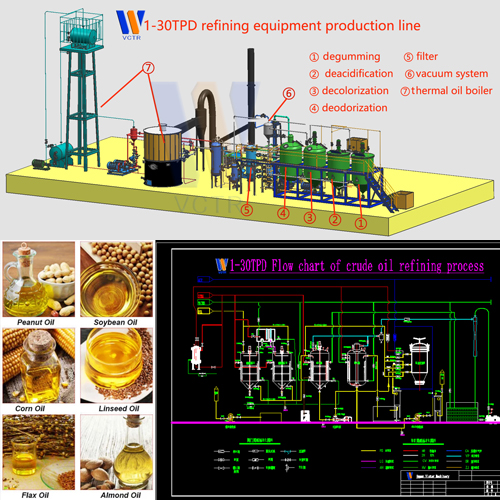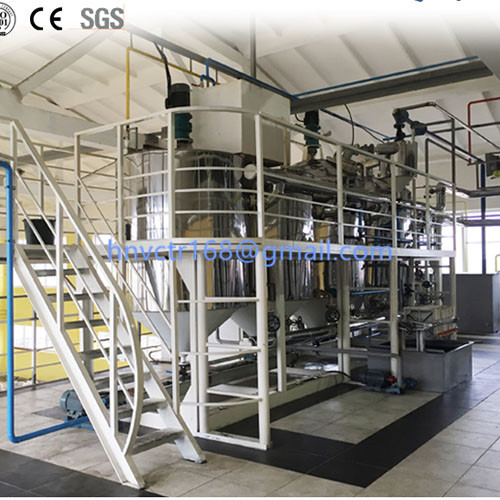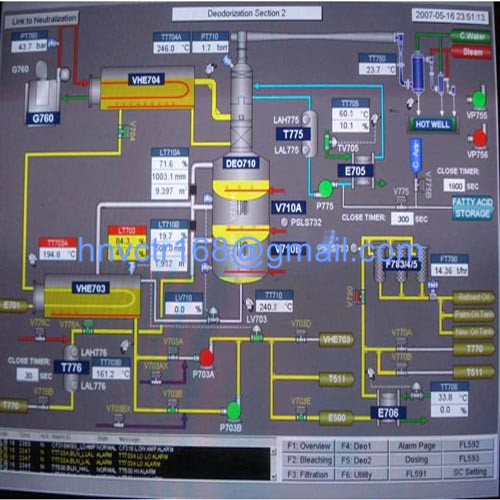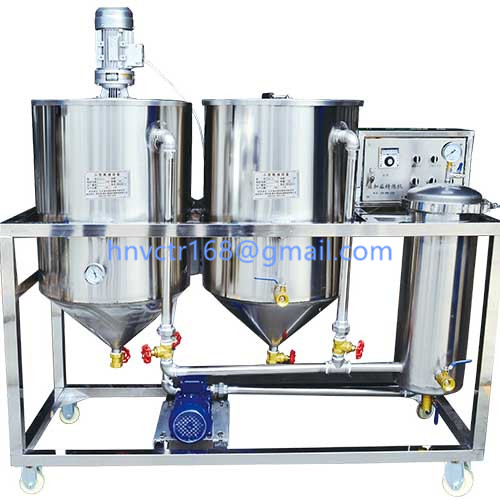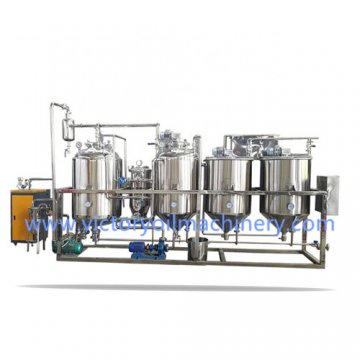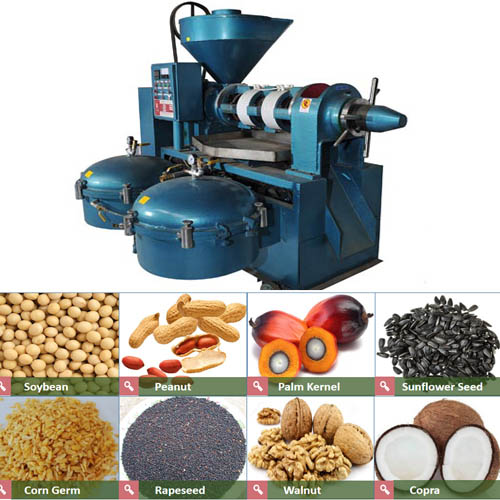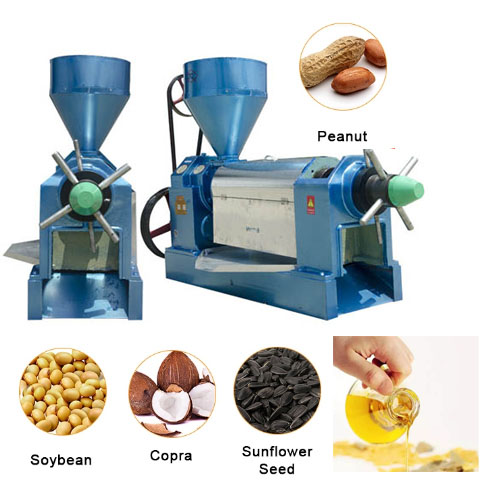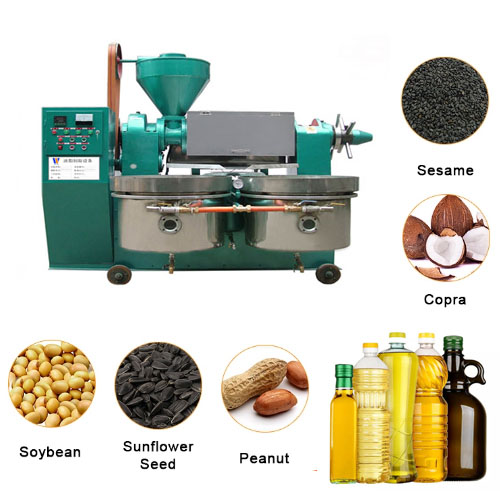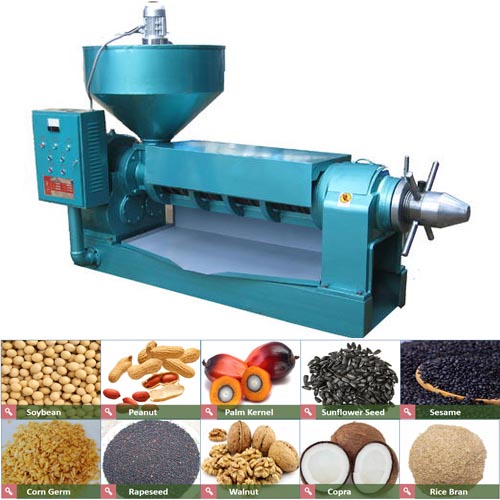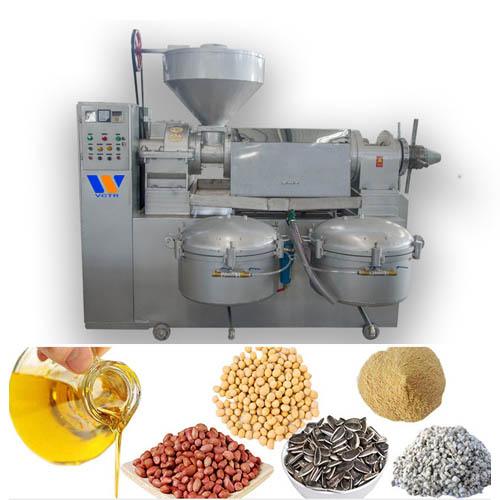Accurate and appropriate processing of edible oil (1)
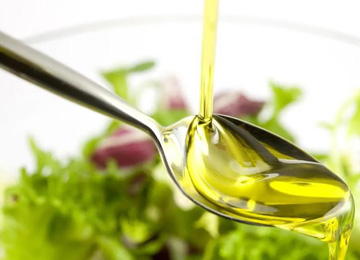
The theoretical exploration and academic research on the precise and appropriate processing of edible oil began in the early 21st century, and basically took shape during the "Eleventh Five-Year" period. A new healthy oil processing model based on nutrition evaluation and nutrition retention and risk control as the core has been initially established. Some of its achievements have been incorporated into national/industry standards and food nutrition policies, gradually reversing the long-standing over-processing situation. This article reviews the historical background and nutritional origin of the new theory, introduces its engineering practice and major achievements in edible oil production, and looks forward to its development trend, aiming to comprehensively promote the optimization and upgrading of my country’s edible oil processing industry. Realize the historical change from "following" to "parallel running and leading", leading the new trend of international oil manufacturing.
1 The historical background of the new theory
1.1 The phenomenon of over-processing of edible oil in my country is outstanding
Oil processing has gone through a long period of time from workshop-style operation to modern deep processing. During this period, with the advancement of science and technology, the production technology and equipment have been continuously improved. The current oil processing industry is in the production scale and efficiency, product quality and variety, resource development and Utilization and other aspects are displayed in front of the world with unprecedented innovation and development.
While people were immersed in the huge development of the oil industry, people of insight put forward various problems that existed in a timely manner, and began to reflect on the misunderstandings in the field of edible oil processing and consumption.
One of its misunderstandings is that it blindly connects with international standards and generally processes and consumes highly refined fats. The eating habits of Chinese people are obviously different from those of western developed countries. Western developed countries mainly serve cold salads and salads. Salad oil (first-class oil) is the special oil for their dishes, while Chinese cuisine is mainly cooked at high temperature, suitable for high-grade cooking oil (second-class oil) and other moderately refined oils.
However, over the past 40 years of reform and opening up, China has learnt from developed countries in the West, and the concept of edible oil processing has been deeply influenced by it. Not only is the process and equipment monopolized by it, but the product quality has also followed its standards. Color and tasteless, leading to over-processing. As a result, the various small-package oils available on the market are almost all highly refined oils that have undergone "four-off" or even "five-off" treatment, and their purity is almost comparable to that of pure water. However, low and moderately refined oils have been difficult to find in the bulk of fats and oils. At present, first-class oil is widely used in daily cooking in my country and has become the main variety of edible oil consumption. The second-class oil only accounts for 3% of the total edible oil. This situation has not only aggravated resource and energy consumption and increased environmental pressure, but also caused serious losses of natural beneficial concomitants in oil products, as well as new food risk factors.
1.2 my country's per capita consumption of edible oil remains high
Over the past 40 years of reform and opening up, my country's edible oil consumption has gone through four stages: serious shortage, insufficient, suitable, and excessive. The food and clothing standard recommended by the Food and Agriculture Organization of the United Nations is 10 kg/year. The "China Food and Nutrition Development Program (2014-2020)" clearly states that the consumption of edible oil must be controlled. By 2020, the national per capita consumption of edible vegetable oil is 12 kg/year. In fact, this data was reached at the end of the Tenth Five-Year Plan in China. At present, China’s per capita edible oil consumption has exceeded 24.4 kg/year, and the average daily per capita oil intake is 67 g, far exceeding the “Chinese Residents’ Dietary Guidelines”. (2016) "Recommended 20-25 g per day. The "Report on the Status of Nutrition and Chronic Diseases of Chinese Residents (2015)" shows that the average dietary fat energy supply ratio of Chinese residents reaches 34%, which exceeds the upper limit of fat energy supply ratio (30%). The above data all show that Chinese residents have too much fat intake. In the next stage, my country's edible oil nutrition and consumption strategy should be developed in the direction of "eating less oil and eating better oil".
1.3 The high incidence of chronic diseases in the Chinese population
In the past 20 years, the disease spectrum of Chinese residents has changed greatly, and obesity and chronic diseases have become popular. The "Report on Nutrition and Chronic Disease Status of Chinese Residents (2015)" pointed out that the average life expectancy of Chinese residents has been increasing year by year, and their health and nutritional levels have continued to improve. However, at the same time, excessive intake of refined white rice, noodles, oil, salt and other unhealthy lives The way also affects people's health. The malnutrition rate of residents remains high, which is manifested in the high incidence of chronic diseases, overweight and obesity, and lack of micronutrients, facing the dilemma of "double nutritional burden". The prevention of chronic diseases has become the biggest livelihood demand and even a national strategy. Promoting a healthy consumption model with a diversified dietary structure, controlling the consumption of edible oil, and ensuring the quality and balanced intake of dietary fat have become one of the important measures for the prevention of chronic diseases.
1.4 Turnaround of edible oil nutrition research
People’s understanding of the nutrition and function of lipids is deepening. Lipid science has crossed the stage of fatty acid nutrition as the research content, and has entered a higher level of in-depth research on the relationship between physiological activity and structure, and expanded to the relationship between fatty acid and glycerol binding position. In the field of functional research on structural lipids and trace concomitants, mainstream lipid nutrition has abandoned the single nutrient thinking and has begun to focus on the relationship between overall dietary patterns and chronic diseases. The new point of view is that: edible oil rich in plant compounds is not only a high-energy food, but also a high-quality food with high nutrient density; only reducing total dietary fat has limited health benefits, while an appropriate amount of high-quality oil is beneficial to the human body. In short, the research on edible oil nutrition has shifted from macronutrients to micronutrients, and cognition has reached a new stage and new heights. Some of its achievements have been incorporated into public nutrition policies, pointing out new directions and setting new tasks for edible oil processing.
2 Scientific review of the phenomenon of over-processing of edible oil
2.1 Excessive processing significantly reduces the nutritional value of edible oil
Over-processed oils are attractive in appearance, but the natural nutritional companions are severely lost. Among them, carotene and chlorophyll have been mostly removed, and plant sterols, vitamin E, and squalene lose 10% to 50% depending on the processing depth, which greatly reduces the nutritional value of edible oil. Vitamin E is an essential nutrient for the human body, and the role of plant sterols in preventing chronic diseases has also been confirmed. The Chinese Nutrition Society recommends an adult vitamin E intake of 14 mg/d (in α-TE) and sterols of 900 mg/d. The "Monitoring Report on Nutrition and Health Status of Chinese Residents (2010-2013)" pointed out that the average intake of α-TE per capita in my country is 8.6 mg/d, and the vitamin E intake is mainly derived from cooking oil. Due to excessive processing, vitamin E in the oil The loss of E was severe, leading to a downward trend in consumers' vitamin E intake from oil. In 1992, urban residents' vitamin E intake through cooking oil accounted for 69.3%, and in 2012 it only accounted for 60.0%. It is estimated that over-processing of fats and oils has caused a loss of about 15,000 tons of natural vitamin E, which exceeds the current production of natural vitamin E in my country; the loss of plant sterols is about 32,000 tons, while the average intake of phytosterols by Chinese residents is only 322 mg/d, of which 40 % Comes from vegetable oil. It is of great significance if most of these refined nutrients can be retained in the edible oil.
2.2 Food safety risks caused by excessive oil processing
Excessive processing of oils and fats is also associated with new food risk factors, such as trans fatty acids, 3-chloropropanol esters, glycidyl esters, etc., and at the same time causes frequent occurrences of edible oil's color reversion, aftertaste and haze. The 2013 National Food Safety Risk Assessment showed that edible vegetable oil is the main source of dietary trans fatty acids for urban residents, accounting for 49.8% of the total dietary trans fatty acid intake. The Kao edible oil incident in Japan (2008), the infant formula milk powder incident in Europe (2009), and the Ferrero Chocolate Nutella incident (2017) that have erupted in recent years are all caused by the over-processing of edible oil. Caused by higher glyceride content. In order to eliminate hidden dangers, well-known international companies such as Nestlé and Wyeth have put forward stringent safety index requirements for the content of 3-chloropropanol ester, glycidyl ester and trans fatty acid in infant formula milk powder oil including my country.
2.3 Excessive processing increases the consumption of raw and auxiliary materials, wastes energy, and pollutes the environment. With the continuous improvement of the degree of edible oil refining, the oil yield gradually decreases. In terms of the refining loss rate, the third and fourth grade oil is about 2%, while the first grade oil is about 2%. Increase to about 5%. Excessive processing not only increases the additional energy consumption, but the amount of auxiliary materials such as acid, alkali, water, and adsorbent used also increases with the improvement of the degree of refining, resulting in more three wastes and polluting the environment. The treatment of the three wastes requires more equipment. Lead to an increase in product costs. Most of the by-products produced by over-processing are only used as low-grade feed or waste, and have not been further processed into more valuable products, causing huge waste.
1 The historical background of the new theory
1.1 The phenomenon of over-processing of edible oil in my country is outstanding
Oil processing has gone through a long period of time from workshop-style operation to modern deep processing. During this period, with the advancement of science and technology, the production technology and equipment have been continuously improved. The current oil processing industry is in the production scale and efficiency, product quality and variety, resource development and Utilization and other aspects are displayed in front of the world with unprecedented innovation and development.
While people were immersed in the huge development of the oil industry, people of insight put forward various problems that existed in a timely manner, and began to reflect on the misunderstandings in the field of edible oil processing and consumption.
One of its misunderstandings is that it blindly connects with international standards and generally processes and consumes highly refined fats. The eating habits of Chinese people are obviously different from those of western developed countries. Western developed countries mainly serve cold salads and salads. Salad oil (first-class oil) is the special oil for their dishes, while Chinese cuisine is mainly cooked at high temperature, suitable for high-grade cooking oil (second-class oil) and other moderately refined oils.
However, over the past 40 years of reform and opening up, China has learnt from developed countries in the West, and the concept of edible oil processing has been deeply influenced by it. Not only is the process and equipment monopolized by it, but the product quality has also followed its standards. Color and tasteless, leading to over-processing. As a result, the various small-package oils available on the market are almost all highly refined oils that have undergone "four-off" or even "five-off" treatment, and their purity is almost comparable to that of pure water. However, low and moderately refined oils have been difficult to find in the bulk of fats and oils. At present, first-class oil is widely used in daily cooking in my country and has become the main variety of edible oil consumption. The second-class oil only accounts for 3% of the total edible oil. This situation has not only aggravated resource and energy consumption and increased environmental pressure, but also caused serious losses of natural beneficial concomitants in oil products, as well as new food risk factors.
1.2 my country's per capita consumption of edible oil remains high
Over the past 40 years of reform and opening up, my country's edible oil consumption has gone through four stages: serious shortage, insufficient, suitable, and excessive. The food and clothing standard recommended by the Food and Agriculture Organization of the United Nations is 10 kg/year. The "China Food and Nutrition Development Program (2014-2020)" clearly states that the consumption of edible oil must be controlled. By 2020, the national per capita consumption of edible vegetable oil is 12 kg/year. In fact, this data was reached at the end of the Tenth Five-Year Plan in China. At present, China’s per capita edible oil consumption has exceeded 24.4 kg/year, and the average daily per capita oil intake is 67 g, far exceeding the “Chinese Residents’ Dietary Guidelines”. (2016) "Recommended 20-25 g per day. The "Report on the Status of Nutrition and Chronic Diseases of Chinese Residents (2015)" shows that the average dietary fat energy supply ratio of Chinese residents reaches 34%, which exceeds the upper limit of fat energy supply ratio (30%). The above data all show that Chinese residents have too much fat intake. In the next stage, my country's edible oil nutrition and consumption strategy should be developed in the direction of "eating less oil and eating better oil".
1.3 The high incidence of chronic diseases in the Chinese population
In the past 20 years, the disease spectrum of Chinese residents has changed greatly, and obesity and chronic diseases have become popular. The "Report on Nutrition and Chronic Disease Status of Chinese Residents (2015)" pointed out that the average life expectancy of Chinese residents has been increasing year by year, and their health and nutritional levels have continued to improve. However, at the same time, excessive intake of refined white rice, noodles, oil, salt and other unhealthy lives The way also affects people's health. The malnutrition rate of residents remains high, which is manifested in the high incidence of chronic diseases, overweight and obesity, and lack of micronutrients, facing the dilemma of "double nutritional burden". The prevention of chronic diseases has become the biggest livelihood demand and even a national strategy. Promoting a healthy consumption model with a diversified dietary structure, controlling the consumption of edible oil, and ensuring the quality and balanced intake of dietary fat have become one of the important measures for the prevention of chronic diseases.
1.4 Turnaround of edible oil nutrition research
People’s understanding of the nutrition and function of lipids is deepening. Lipid science has crossed the stage of fatty acid nutrition as the research content, and has entered a higher level of in-depth research on the relationship between physiological activity and structure, and expanded to the relationship between fatty acid and glycerol binding position. In the field of functional research on structural lipids and trace concomitants, mainstream lipid nutrition has abandoned the single nutrient thinking and has begun to focus on the relationship between overall dietary patterns and chronic diseases. The new point of view is that: edible oil rich in plant compounds is not only a high-energy food, but also a high-quality food with high nutrient density; only reducing total dietary fat has limited health benefits, while an appropriate amount of high-quality oil is beneficial to the human body. In short, the research on edible oil nutrition has shifted from macronutrients to micronutrients, and cognition has reached a new stage and new heights. Some of its achievements have been incorporated into public nutrition policies, pointing out new directions and setting new tasks for edible oil processing.
2 Scientific review of the phenomenon of over-processing of edible oil
2.1 Excessive processing significantly reduces the nutritional value of edible oil
Over-processed oils are attractive in appearance, but the natural nutritional companions are severely lost. Among them, carotene and chlorophyll have been mostly removed, and plant sterols, vitamin E, and squalene lose 10% to 50% depending on the processing depth, which greatly reduces the nutritional value of edible oil. Vitamin E is an essential nutrient for the human body, and the role of plant sterols in preventing chronic diseases has also been confirmed. The Chinese Nutrition Society recommends an adult vitamin E intake of 14 mg/d (in α-TE) and sterols of 900 mg/d. The "Monitoring Report on Nutrition and Health Status of Chinese Residents (2010-2013)" pointed out that the average intake of α-TE per capita in my country is 8.6 mg/d, and the vitamin E intake is mainly derived from cooking oil. Due to excessive processing, vitamin E in the oil The loss of E was severe, leading to a downward trend in consumers' vitamin E intake from oil. In 1992, urban residents' vitamin E intake through cooking oil accounted for 69.3%, and in 2012 it only accounted for 60.0%. It is estimated that over-processing of fats and oils has caused a loss of about 15,000 tons of natural vitamin E, which exceeds the current production of natural vitamin E in my country; the loss of plant sterols is about 32,000 tons, while the average intake of phytosterols by Chinese residents is only 322 mg/d, of which 40 % Comes from vegetable oil. It is of great significance if most of these refined nutrients can be retained in the edible oil.
2.2 Food safety risks caused by excessive oil processing
Excessive processing of oils and fats is also associated with new food risk factors, such as trans fatty acids, 3-chloropropanol esters, glycidyl esters, etc., and at the same time causes frequent occurrences of edible oil's color reversion, aftertaste and haze. The 2013 National Food Safety Risk Assessment showed that edible vegetable oil is the main source of dietary trans fatty acids for urban residents, accounting for 49.8% of the total dietary trans fatty acid intake. The Kao edible oil incident in Japan (2008), the infant formula milk powder incident in Europe (2009), and the Ferrero Chocolate Nutella incident (2017) that have erupted in recent years are all caused by the over-processing of edible oil. Caused by higher glyceride content. In order to eliminate hidden dangers, well-known international companies such as Nestlé and Wyeth have put forward stringent safety index requirements for the content of 3-chloropropanol ester, glycidyl ester and trans fatty acid in infant formula milk powder oil including my country.
2.3 Excessive processing increases the consumption of raw and auxiliary materials, wastes energy, and pollutes the environment. With the continuous improvement of the degree of edible oil refining, the oil yield gradually decreases. In terms of the refining loss rate, the third and fourth grade oil is about 2%, while the first grade oil is about 2%. Increase to about 5%. Excessive processing not only increases the additional energy consumption, but the amount of auxiliary materials such as acid, alkali, water, and adsorbent used also increases with the improvement of the degree of refining, resulting in more three wastes and polluting the environment. The treatment of the three wastes requires more equipment. Lead to an increase in product costs. Most of the by-products produced by over-processing are only used as low-grade feed or waste, and have not been further processed into more valuable products, causing huge waste.

